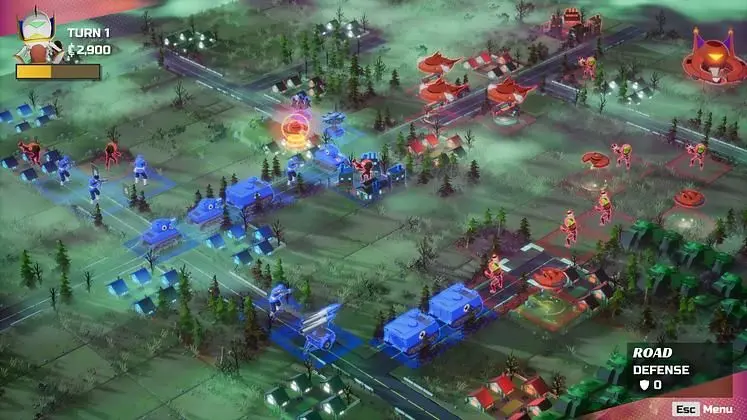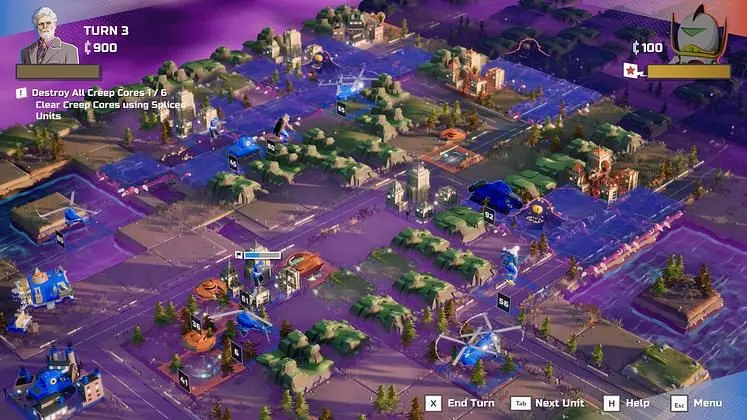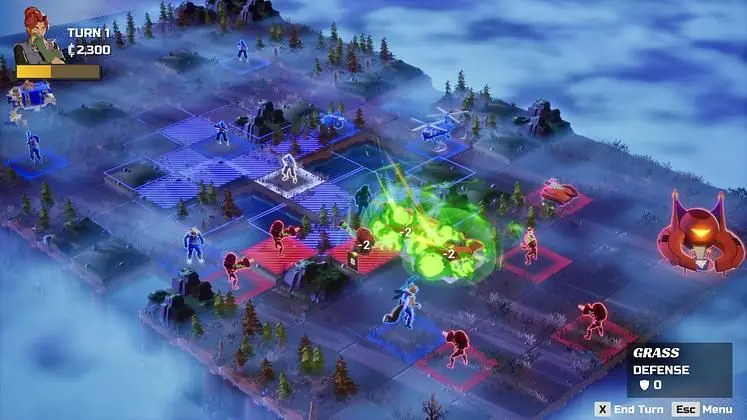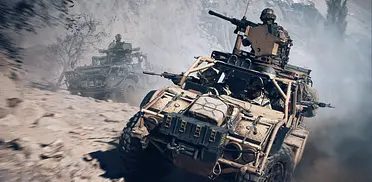We could argue turn-based strategy video games are vastly more popular nowadays than RTS titles, which is why even studios that have traditionally stuck to real-time strategy are trying to dip their toes into turn-based tactics. With Earth vs Mars, Relic Labs lands a creative win, but is it enough to justify smaller experiments from Relic Entertainment?
At the time of writing, it’s safe to say the game has flown under most people’s radars. On Steam, it’s sitting at Positive with 29 user reviews, and SteamDB shows an all-time peak of only 33 users playing at the same time. For a game packing online multiplayer and good creative tools, it’s a disappointing turnout, but that doesn’t mean you should skip it too.
Earth vs Mars might be the most openly retro release in the strategy space (real-time or turn-based) I’ve come across in a good while. Whereas many modern riffs on legendary series like Command & Conquer or XCOM bring new ideas that shake things up to the table, Relic Labs’ (Relic Entertainment’s new small projects label) take on the Advance Wars formula feels like a relic, and I don’t think that’s bad, though it comes with rather obvious limitations.
The premise is as simple as it can be: Earth has been invaded by the Martians – War of the Worlds style – and we (alongside a very colorful cast of characters) are tasked with finding their weaknesses to successfully defend the planet. The one and only twist from a gameplay perspective comes via the Splice-o-Tron, a device developed from salvaged alien tech which can mix animal DNA with “volunteers” in order to give humans a good advantage against the invaders.
Considering how familiar and simple (this also means it’s remarkably easy to pick up and learn) the core loop is, the hybrid units are the start of a fun and fresh take on the kind of turn-based tactics which first graced the Game Boy Advance in 2001. The big issue is that more unique ideas never arrive, and besides the quirks and surprising skills some late-game units have, Earth vs Mars largely stays one-note once you’ve figured out how to properly max the special hybrid units’ stats out and how to use their bonus abilities as well as the commanders’ special moves, which are just bonus abilities that can’t completely alter the tide of battle.
Like in Advance Wars, the game largely works with two core concepts: The units hit harder the more health they have, and it’s all a huge game of rock-paper-scissors with clear-cut strengths and weaknesses; some vehicles have the ability to hit their targets from afar, but otherwise, it’s all very restrained. With the entire game being built on familiar foundations (even when the hybrids come into play with extra health and some surprises of their own), most of the actual strategy comes from chess-like thinking and execution. One faction can quickly snowball as soon as it controls over half of a map’s cities and factories (towns which can produce units), so trying not to bite more than you can chew and taking terrain bonuses into account are the keys to not losing in just a few turns.
This isn’t complexity hidden in plain sight, but a bigger focus on tabletop-like strategy stripped back to its more engaging core. It works, should be quickly understood by all sorts of players giving the game a go, but also feels self-limiting, especially when the developers are riffing on a formula from 24 years ago that’s barely evolved here. The basics are all there and well executed, but more meat on its design bones would help it stand out. Thankfully, the campaign’s difficulty curve is remarkably smooth even with the lack of significant gameplay twists.
Perhaps Earth vs Mars’ biggest strength is how feature-complete it feels given its indie-like price tag. On top of the satisfying (but unsurprising and too chatty) campaign, both offline and online versus modes are in with support for custom maps that can be quickly created and shared by all players. The lack of an active community means these features will be underused, but there’s a very specific type of strategy gamer who will appreciate having these options. Moreover, hybrid units (for both the Earth and Mars factions) can also be created outside the campaign to add extra spice to skirmishes.
On the technical front, there’s not much to discuss. The game looks clean and stylized enough to evoke those warm nostalgic memories, but, much like the mechanical side of things, lacks the extra sauce to become its own thing. No performance hiccups found on my end either, and I’d like to praise the effort to have fully voiced characters even if the writing can be grating and overabundant considering the pitch. The biggest negative I’d like to point out (though the devs are already on it) is the lack of any controller support at launch; due to its simple and chill nature, it’s a perfect fit for laid-back sessions and the Steam Deck.
All in all, this is the sort of strategy game that would’ve been bigger 10 years ago, but with so many turn-based alternatives in the market (including more interesting takes on this specific formula), Earth vs Mars ends up being a commendable effort which simply fails to evolve beyond one gimmick, and thus to entice a crowd that’s spread too thin. It’ll no doubt make it onto many ‘hidden gems’ lists as time passes, but we’ve fought this exact same war before, and with a disturbing lack of marketing to boot, you can’t blame players for not showing up.
Earth vs Mars was released for PC (Steam) on October 29. It’s currently selling for $14.99. No plans for DLC packs have been revealed at the time of writing.
EARTH VS MARS VERDICT
Earth vs Mars doesn’t have a fresh take on familiar tactics, but it gets all the basics right, is constantly pleasant to play, and offers good value for little money.
TOP GAME MOMENT
Sneaking armored transports past enemy lines and into alien HQs to swiftly finish otherwise grueling large-scale battles.
Good vs Bad
- Clean and simple user interface and controls
- As breezy and immediately engaging as its main retro influence
- While it doesn’t substantially alter the loop, the Splice-O-Tron adds flavor
- The in-game map editor and sharing system add a lot of value
- Substantial single-player and multiplayer offerings given the price tag
- The campaign’s learning/difficulty curve is smooth
- Characters in the campaign don’t know when to shut up
- Several missed opportunities to shake things up by leaning on the premise
- The lack of mechanical depth means snowballing is hard to counter
- No gamepad or proper Steam Deck support at launch









